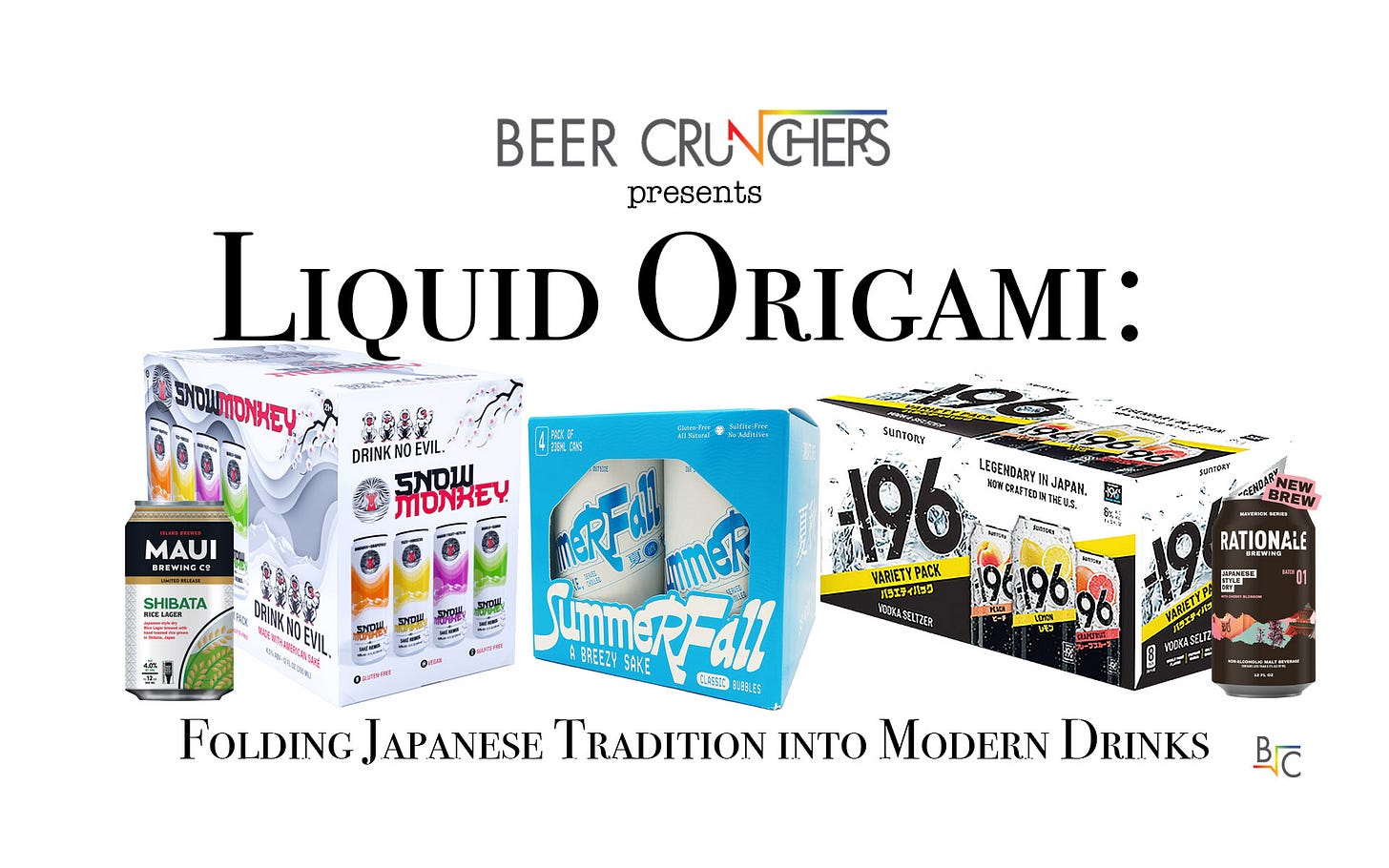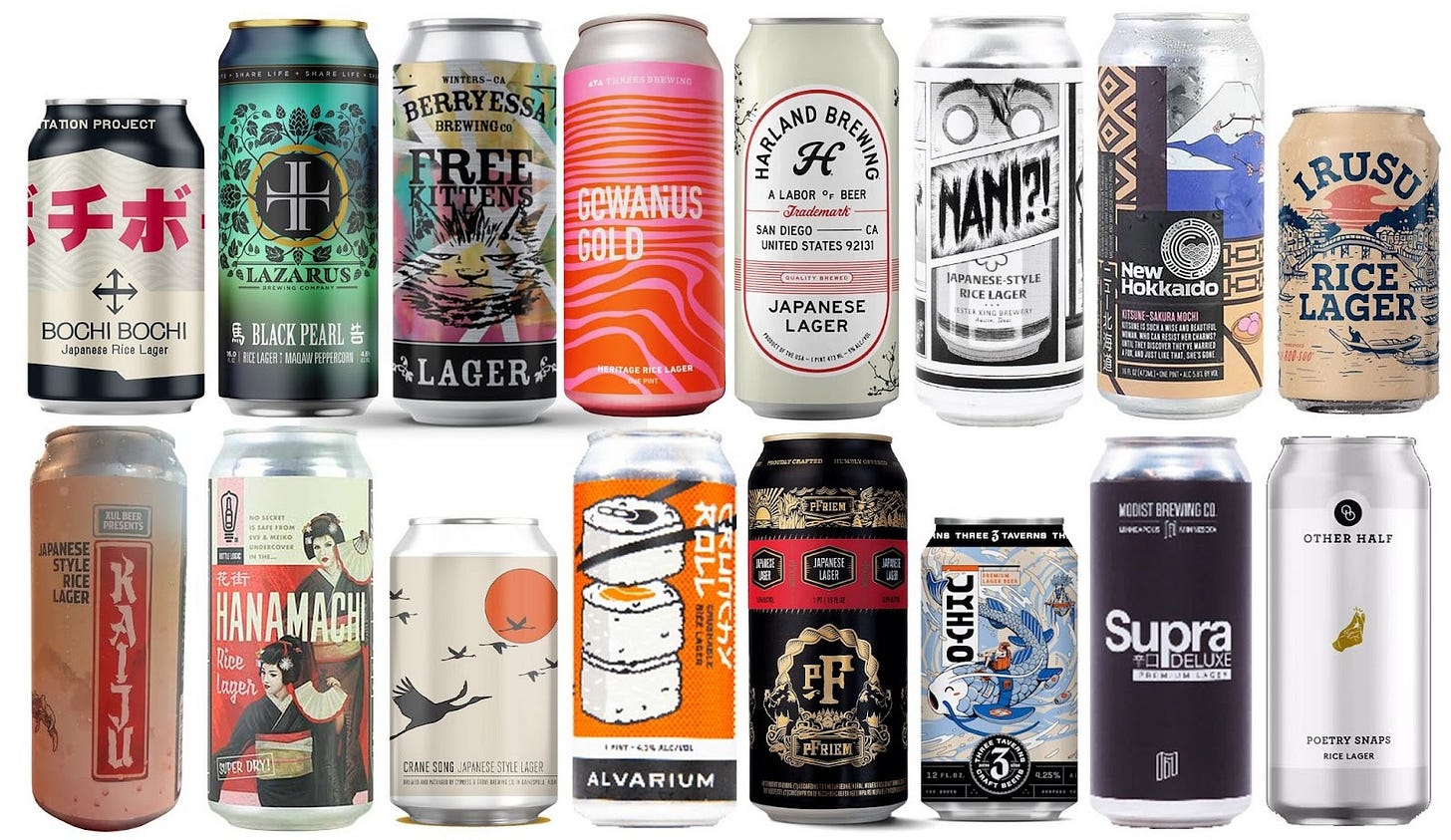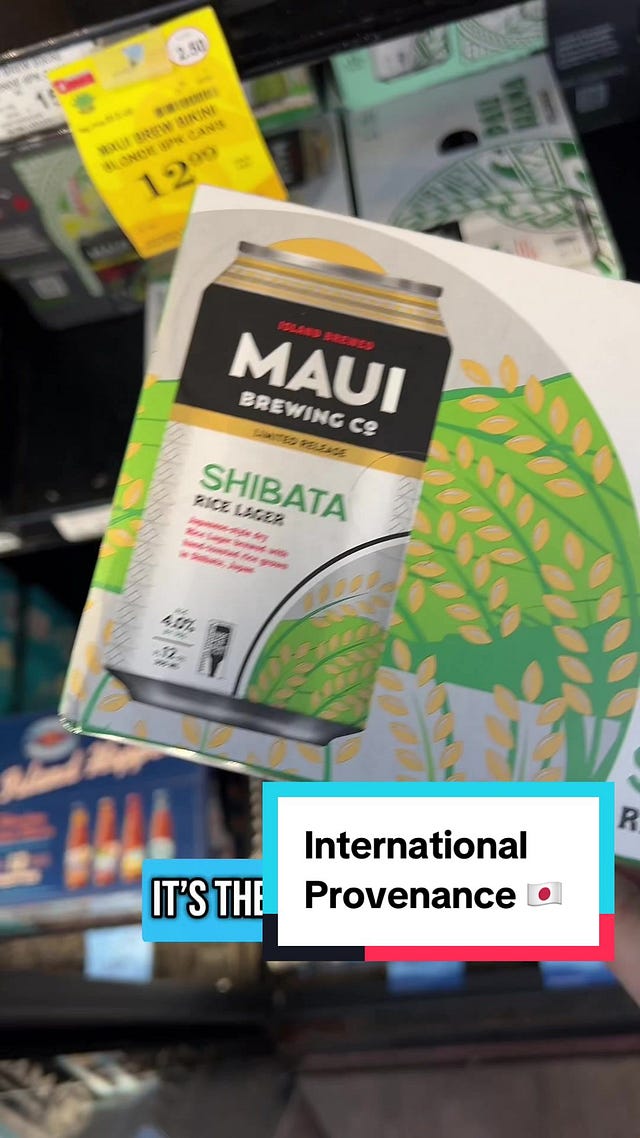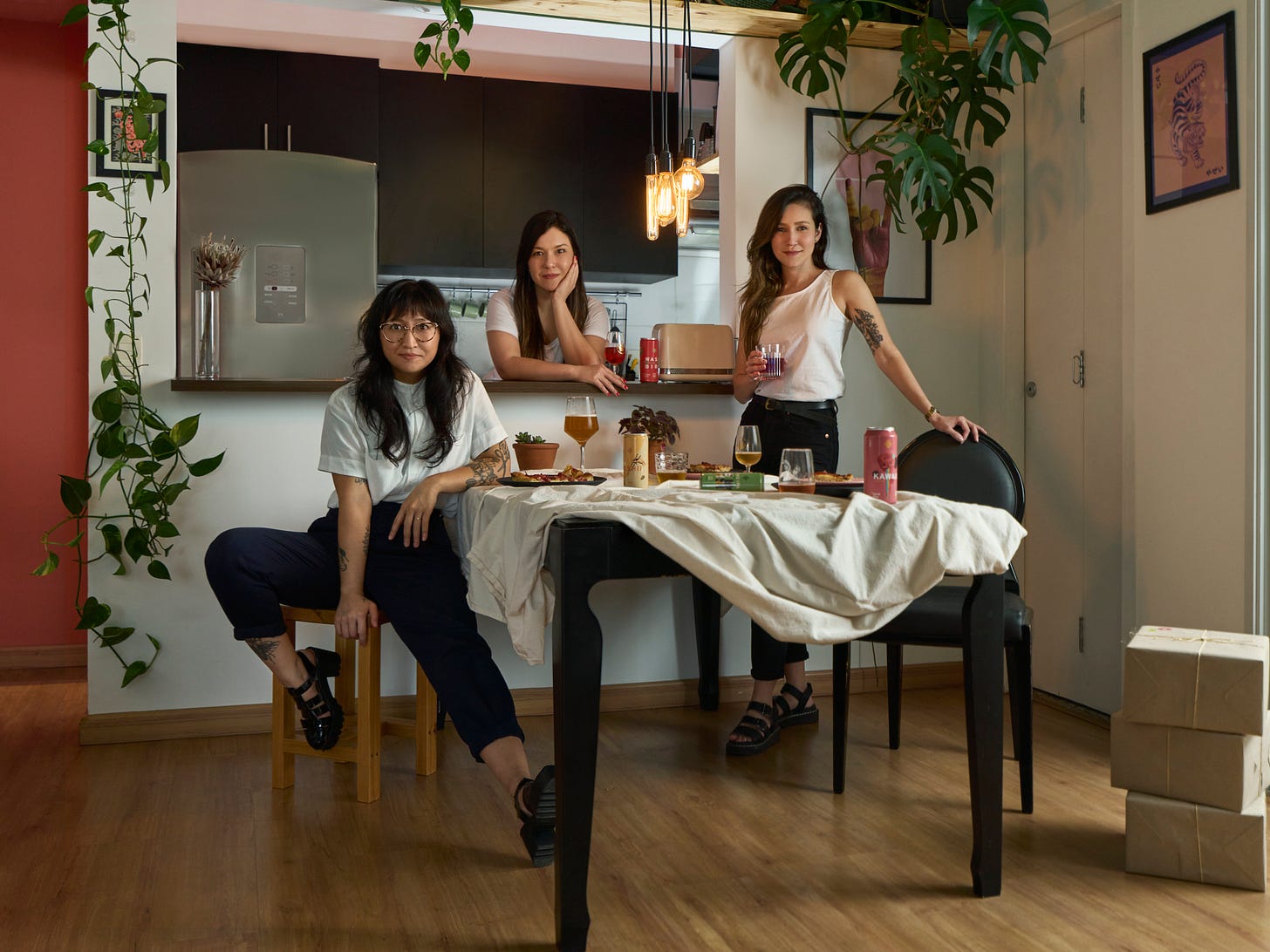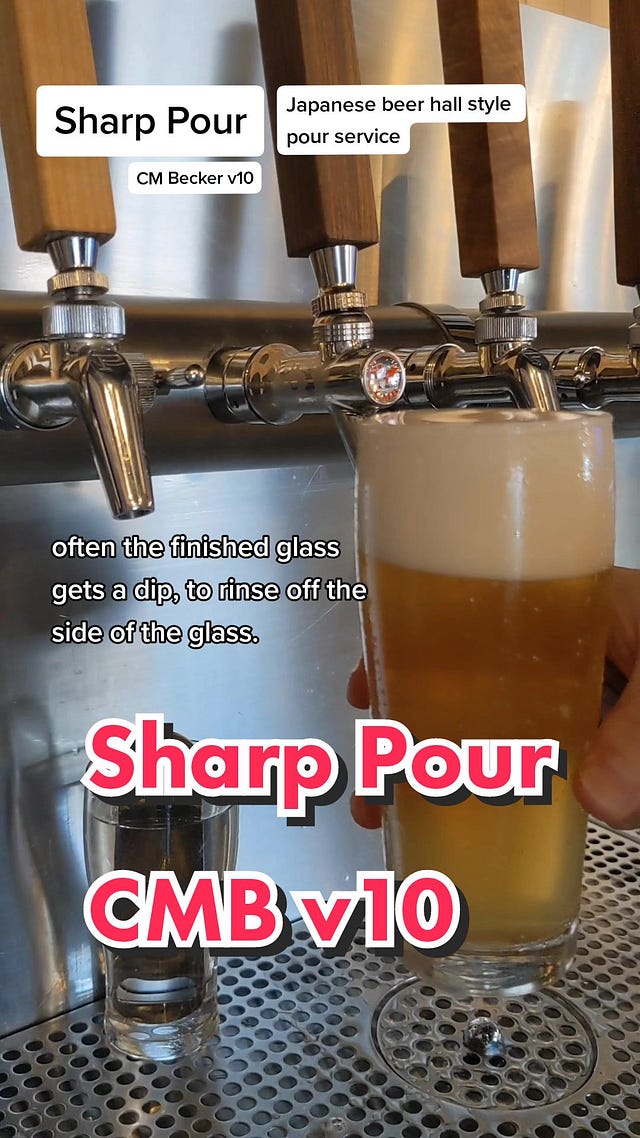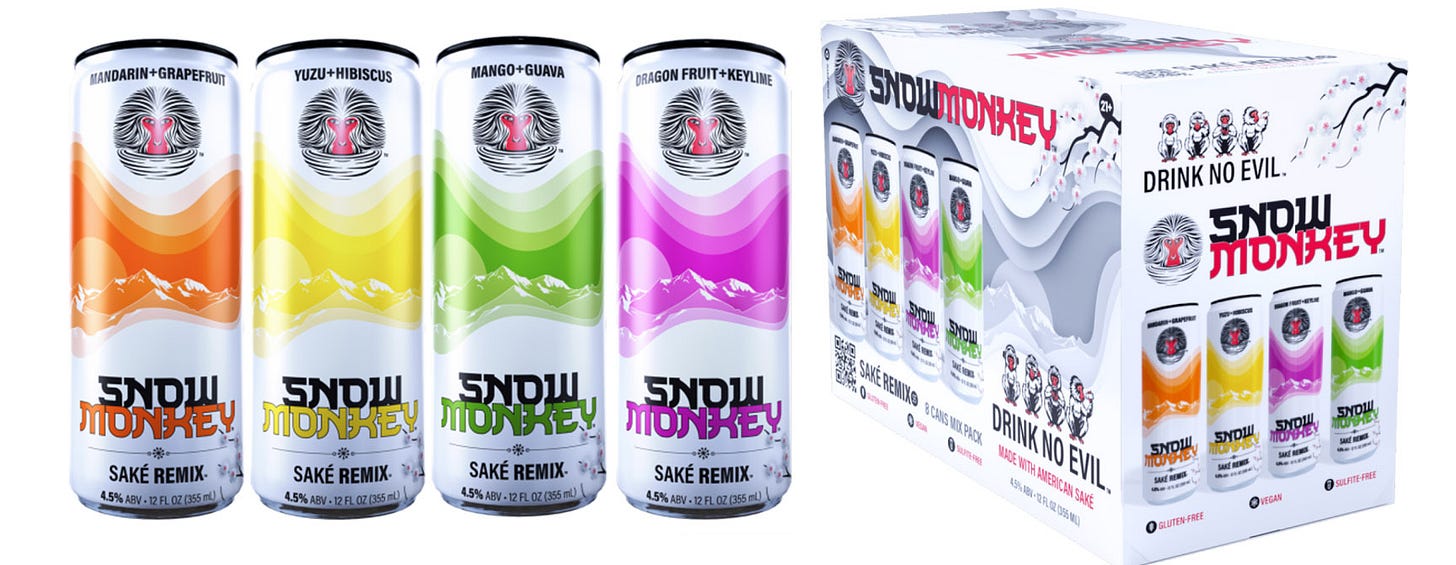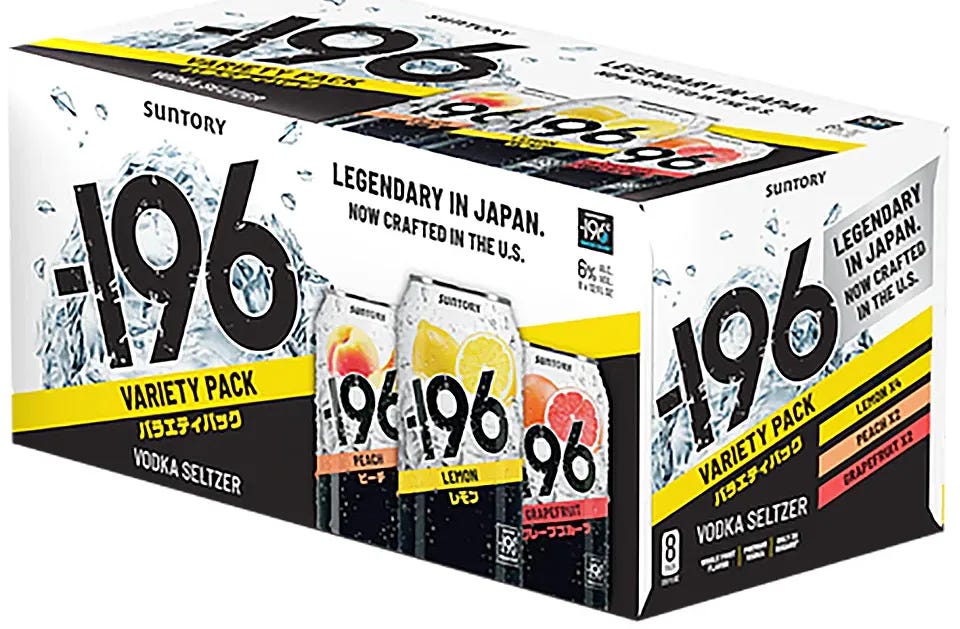Liquid Origami: Folding Japanese Tradition into Modern Drinks
At BrightBev, where I joined as a partner this past spring, we help early-stage beverage brands increase their chances of success where the odds are stacked against them by focusing on route to market and distribution. One of the ways we do that is by first holding exploration sessions with distributors across the country.
My partner Jeff and I use these meetings to surface the trend categories and white spaces that guide our framework across a broad and eclectic series of categories: beverage, food, culture, economy, industry, and history. Distributors like it because they get a different perspective on what’s next. We like it because it helps us quickly test the temperature of the market, spark ideas, and find common ground with the middle tier.
One of the segments beyond beer that continues to catch our attention is premium, ready-to-drink cocktails that pull in international influence. Think thoughtful ingredients, with stories rooted in place and process. These aren’t trying to compete with High Noon or Cutwater on volume or price. They’re building something layered, intentional, and made for drinkers who want more than just convenience.
We’ve been especially fascinated by sake-based RTDs with a Japanese lean. They’re starting to pop up in smart, flavor-forward formats, made in the US but anchored in Japan’s brewing tradition. They feature ingredients like Yuzu and Mandarin, clean labels, and crisp flavor. A sense of transport without trying too hard. And when we share these concepts in distributor sessions, we’re seeing heads nod.
It’s a great proof point that there’s room for more thoughtful, globally-inspired entries alongside the big players, and it’s the kind of trend that gets both retailers and distributors to lean in. The more we’ve been focused on Japanese influence, specifically in the growing spirit-based RTD space, the more we’re reminded of the growing impact across many beverage categories.
Loading Up in America
Japan’s beer market has been historically dominated by its Big Four: Asahi, Kirin, Sapporo, and Suntory, all brands that we’re very familiar with here in the US. Over the past five years though, each has made, or had rumored to be considering, strategic moves in the U.S., aiming to secure brewing capacity, expand portfolios, and stay competitive in the global beer market.
Sapporo started with the 2017 purchase of Anchor Brewing, followed by the acquisition of Stone Brewing in 2022. The Stone deal gave them bicoastal brewing capabilities to produce Sapporo Premium domestically. While Anchor was shut down in 2023, the real goal was production efficiency and a stronger U.S. footprint.
Kirin, through its Lion Little World Beverages division, acquired New Belgium in 2019 and Bell’s Brewery in 2021. These back-to-back deals gave Kirin two of the largest and most respected craft brewers in the country, instantly boosting their presence and distribution reach.
Asahi took a quieter but impactful route, buying Octopi Brewing in Wisconsin in 2024. The facility has capacity for around 850,000 barrels per year, which allows Asahi to brew Super Dry in the U.S. and better compete on freshness, cost, and speed to market.
Beam Suntory has leaned into partnerships. Since 2021, they've worked with Boston Beer Co. on cross-category products like RTDs and hard seltzers. In 2024, rumors of a full acquisition surfaced but were ultimately denied. Still, the attention signaled Suntory’s growing interest in expanding its U.S. presence.
These moves show a clear shift. Japan’s leading brewers are no longer content to simply export. They’re building infrastructure, acquiring talent, and becoming long-term players in the American beer landscape.
Japan’s Beer Scene on Fire
Not only is Japan’s culture influencing the US beer market, but their own beer scene is continuing to rise and, in some cases, beat Americans at their own game.
It wasn’t always like this. For decades, strict regulations made it nearly impossible for small brewers to get licensed. That started to change in 1994, when Japan lowered the production requirement for a beer license from 2 million liters a year to just 60,000. The door cracked open, and a wave of small, local breweries followed. Then in 2018, Japan updated its legal definition of beer to allow more creative ingredients and lower malt content, giving brewers the freedom to experiment without losing the “beer” label on their cans.
At the 2025 World Beer Cup, Japanese brewers took home 13 medals, more than any country besides the US, including gold in the following popular categories: Juicy or Hazy Pale Ale, Bohemian-Style Pilsener, Classic Irish-Style Dry Stout, Dessert Stout or Pastry Stout, and Herb and Spice Beer.
Rice Lagers
Japanese-style rice lagers are nothing new to US craft brewers, especially as one-off, seasonal releases with little at stake and often with little in the way of true, authentic connection to the country. As lagers move further into the craft spotlight, and beer drinkers naturally seek out forms of differentiation and more premium options, the style appears ready for a true break out into more core, year-round portfolios.
What sets these beers apart isn’t just the more intentional style name and themed label, it’s the experience in the glass. When brewed thoughtfully, rice brings more than just a lighter body that lends a crisp, dry finish and a soft, clean mouthfeel that’s hard to replicate with barley alone. It’s the kind of subtlety that feels effortless, yet is anything but.
With the importance of storytelling and ingredients today, rice lagers have an opportunity to go well beyond simply borrowing “Japanese-style” as a modifier onto a rice lager recipe by focusing on the source and lineage of the rice itself, its history, building relationships with the growers, and turning that partnership into an adventure told through what’s in the glass.
Maui Brewing Shibata
While vacationing in Hawaii, I discovered a great example called Shibata from Maui Brewing, the 17th-largest independently owned craft brewery in the US. The recipe was the brainchild of James Newman, Maui’s Brewing Manager, who saw a video I shared on it and gave me the full back story.
The idea for the rice lager began with a local connection called The Rice Factory, a Honolulu-based storefront that sources high-quality Japanese rice. When the brewery approached them for ingredients, they were introduced to a prized variety with deep roots in Japanese history called Koshihikari.
Koshihikari rice dates back to feudal Japan, where warring clans fought over the fertile plains of Shibata. Snowmelt from nearby mountains made the land ideal for rice farming. Eventually, the Mizoguchi clan claimed the territory, building a castle to protect the harvest. That same castle still stands today as a symbol of the city, and the clan’s crest remains Shibata’s official emblem.
Though difficult to grow, Koshihikari endured thanks to the persistence of Shibata’s farmers, who believed in its future. Today, it’s Japan’s most popular rice for its flavor and texture.
When the brewery chose to highlight this rice in their lager, The Rice Factory shared the news with the farmers and city officials in Shibata. Word traveled all the way to the Mayor, who was so moved he flew to Maui with a delegation to meet the brewers and Maui’s ownership. They shared gifts, toured the brewery, and celebrated the connection.
Now, Maui Brewing is in the process of redesigning the beer’s artwork (previewed below) to feature Shibata Castle, sakura blossoms, and the city’s name in the mayor’s own calligraphy. Their tribute to the collaboration has roots that are built on tradition, respect, and craft that gives the brand the type of depth that could give it long-lasting appeal instead of simply hoping that a modifier captures enough intrigue.
Japas Cervejaria
Stories like this, where ingredients carry meaning and beer becomes a cultural bridge, aren’t just limited to Hawaii and Japan. We’ve enjoyed following another story out of Brazil. Japas Cervejaria was founded by three women: Yumi Shimada, Maíra Kimura, and Fernanda Ueno, who met through beer and connected over being among the few women and Japanese descendants in the Brazilian craft beer scene. Their shared experiences inspired them to create something that reflected both their backgrounds and their vision.
The brewery was born from a desire to explore their cultural roots and to challenge the idea that beer belongs to a single gender. Each beer they brew brings together the flavors, aromas, and traditions of Japan and Brazil in a way that feels personal and fresh.The result is a thoughtful collection of beers that honors identity, sparks conversation, and breaks away from tired expectations.
Japas Cervejaria is available in the US, brewed in Kentucky at Against the Grain, and has five year-round beers available including two rice lagers, a pilsner with jasmine flowers, a witbier with ginger and orange peel, and an IPA. You can find them in 15 states and DC, with plans to add up to two more states in 2025.
Sharp Pours
Japan’s influence isn’t just about ingredients. It’s changing how beer can be served too.
Sharp pours, a style of multi-step pouring that creates a tight, creamy foam, have become part of beer service culture in Japan. The idea is to enhance the drinking experience by serving beer with intentionality.
That concept is slowly starting to show up in the US. In Chicago, beer bars like Beermiscuous and breweries like Dovetail and Hopewell have been experimenting with service methods that bring more attention to presentation and foam structure. It gives even the most everyday beer a sense of occasion that is hard to replicate at home.
Non-Alc Beer Joins the Conversation
Rationale, the 16th best-selling craft NA beer brand in the US per NIQ1, just launched what they’re calling a Japanese-Style Dry Lager, containing a blend of both rice and pilsner malts, as well a delicate infusion of natural Cherry Blossom flavor. It’s nice to see NA beers continue to offer so much diversity in styles and I like the cherry blossom addition to give another themed flavor dimension. The brew is the first in a new Maverick series where it will be a Variety Pack exclusive, along with their West Coast IPA, Hazy IPA, and Mexican Style, with hopes of becoming a core year-round beer in the future.
RTD Cocktails
Echoing many of the same patterns we’ve seen in beer, Premium RTD cocktails with international provenance have been gaining momentum with deeper storytelling, intentional ingredients, and a growing appetite for products with real cultural roots. The Japanese-inspired entries feel like a continuation of that shift when they’re thoughtfully sourced, tradition-forward, and built for drinkers who want more than just convenience. Here’s a few new examples that have caught our attention:
SummerFall
The first Japanese-inspired RTD cocktail to catch my attention was SummerFall, whose founder has a fascinating background making him uniquely qualified to lead in a new era and make his own dream of “Sake for Everyone” a reality.
Born in Japan and shaped by the wine culture of France, Takuma blends deep cultural roots with a global perspective. He trained under a legendary sake brewer, founded France’s top-selling sake brand, and now brings that experience to California through SummerFall.
The modern, approachable take on sake designed for today’s drinkers includes the following key call-outs and features:
“Naturally clean”, gluten-free, with no sulfites or other additives
Japanese brewing methods, produced with Californian culture (quite literally) and terroir using unpolished, California-grown rice, white koji and wine yeast during fermentation.
Canned bubbly sake is reshaping how and where sake is enjoyed—blending time-honored Japanese brewing with California’s casual, flavor-forward approach to create a fresh, portable take on tradition.
Clocking in at 11% ABV, SummerFall is available in two flavors: Classic Bubbles & Yuzu Bubbles
Snow Monkey
A brand new beverage that’s related, but quite different, is Snow Monkey, which calls itself a Sake Remix at 4.5% ABV. Developed out of Arkansas’ first and only sake brewery, Origami Sake, their messaging includes the following:
Consistent with other brands, Snow Monkey calls out that they start with an American sake base.
“It’s time to drink no evil”, referring to the lack of artificial flavors,
Their 100 calories keeps them at the low end for health-conscious consumers, in addition to 2 grams of sugar, 4 grams of Carbs, no sulfites, vegan, and gluten free.
“East-meets-West flavors bubble forth” in reference to the 4 fruit flavors, each with a connection to Japan of varying significance, and balanced with umamiConsistent with other brands, Snow Monkey calls out that they start with an American sake base.
-196
Not sake-based, but Suntory Global Spirits just rolled out a new vodka seltzer brand nationwide called -196, pronounced “minus one-nine six”, stemming from the temperature that the whole real fruit infusions are flash-frozen at before being crushed and integrated into the vodka. The packaging helps bridge this educational hurdle with a badge that attempts to connect the brand name to their proprietary process.
Not dissimilar from SummerFall’s talking points, -196’s tagline also calls out the provenance that Suntory is “Legendary in Japan”, while underneath clarifying that the product is “Now Crafted in the U.S.” to both attach itself to the company’s origin, but be upfront that these are made domestically in the US. Let’s be honest, shipping vodka seltzers across the Pacific doesn’t make a lot of sense for anyone. The flavors include Strawberry, Lemon, Grapefruit, and Peach, each clocking in at 5.5% ABV.
Rising Sun Lifts All Boats
From rice lagers and sharp pours to sake RTDs and multinational acquisitions, Japanese influence is touching nearly every corner of the beverage world. These aren’t surface-level trend plays. They’re stories with roots.
At BrightBev, we’re excited by what that means for the industry. Distributors are telling us that they are taking notice, first in their heightened investment in those big, national beer brands, but also now in all the other alcohol beverage formats with connections to this country so deep in culture, history and craftsmanship.
This rising tide is encouraging deeper thinking, better questions, and more culturally aware products. And for drinkers, it’s bringing a wave of new choices that feel thoughtful, transportive, and worth slowing down for.
The future isn’t just about what gets made. It’s about who’s shaping it. And right now, Japan is playing a major part in that story.
Total US XAOC + Liquor Open State + Conv, Latest 52 weeks ending 3/22/25





